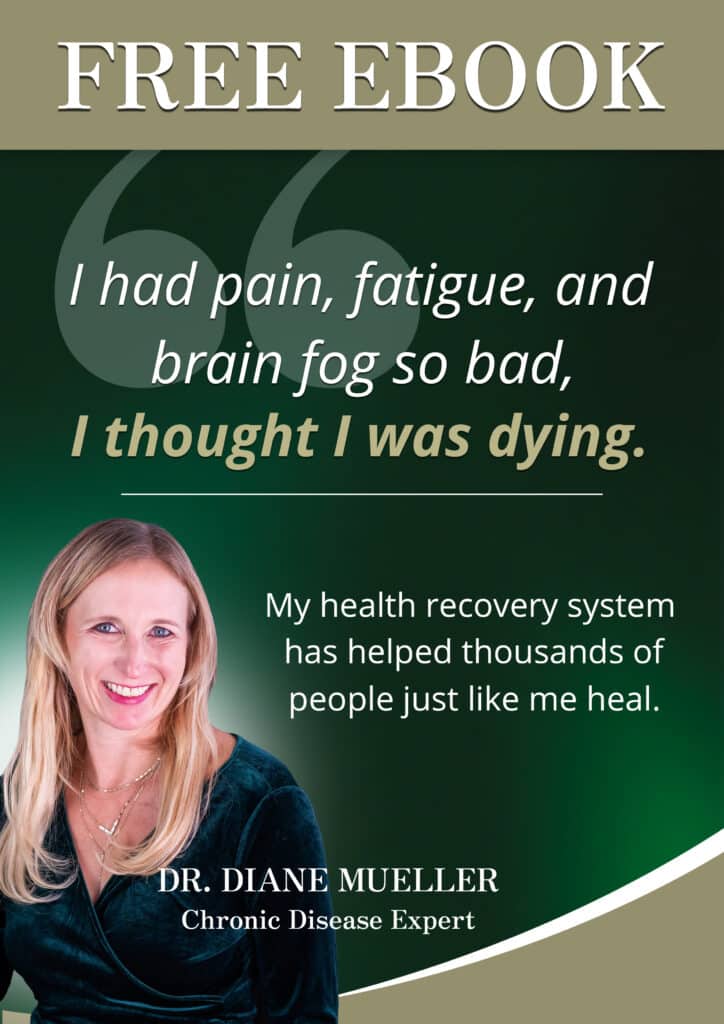
By Dr. Diane Mueller: What is CIRS isn’t always straightforward with multiple symptoms and test markers. So, if you’ve been experiencing unexplained symptoms like chronic fatigue, cognitive difficulties, or even a metallic taste in your mouth, it’s time to explore the possibility of CIRS – we’ll dive in what it is CIRS and its implications.

Key Takeaways
Have Lyme Disease or suspect you do?
We have helped thousands of people restore their health and quality of life by diagnosing and treating their Lyme Disease
Chronic Inflammatory Response Syndrome (CIRS) is a multi-system, multi-symptom disease characterized by the immune system’s dysfunctional response to biotoxins, leading to chronic inflammation throughout the body. This condition may potentiate or appear as other severe illnesses, including depression, anxiety, and Alzheimer’s. Approximately 25% of American adults and children may be genetically susceptible to CIRS. The symptoms are often misdiagnosed as conditions like fibromyalgia, chronic fatigue syndrome, or ADHD. Some researchers even believe Type 3 Alzheimer’s disease could result from CIRS, highlighting the necessity for precise diagnostic procedures.
The sources of CIRS span a wide range that includes chronic sinus infections associated with MARCONS (Multiple Antibiotic-Resistant Coagulase-Negative Staphylococci), tick-borne illnesses, ingestion of Ciguatera-contaminated fish, and brown recluse spider bite infections. Essentially, CIRS behaves as your immune system’s ill-fated response to a biotoxin. The technical nature of test markers and the diversity in symptom manifestation exacerbate the arduous process of diagnosing this condition accurately.
In the context of mold illness, we primarily discuss a biotoxin illness labeled Chronic Inflammatory Response Syndrome or CIRS. According to a publication from the National Institute for Occupational Safety and Health in 2011, as many as 50% of U.S. buildings were reported water-damaged, potentially exposing around 160 million people to the risk of developing CIRS. This significant proportion possibly played a role in the surge of chronic fatigue syndrome, fibromyalgia, and depression in recent years.
The air in these water-damaged buildings is contaminated with a mixture of molds, bacteria, and related chemicals, which, when inhaled, can create severe inflammation in the body through the activation of the immune system. In essence, CIRS emerges from an immune system that has lost its control mechanisms, so triggering inflammation throughout the body.
When dealing with health issues, understanding their cause is essential for effective treatment. CIRS stands as a unique medical entity, offering a broad spectrum of potential signs and symptoms. They manifest in various systems within the body, primarily reflecting as physical or cognitive dysfunctions.
Individuals dealing with CIRS often face a multitude of physical complaints that doctors may initially mistake for everyday aches and pains. Experiencing ongoing, unexplained fatigue forms a primary red flag. Weight gain, joint pain, and sinus issues also prove common among those afflicted. Discomfort extends to memory and concentration difficulties, disorientation, insomnia, gastrointestinal issues, fever, headaches, and respiratory issues.
On the cognitive front, CIRS is capable of causing quick changes. Issues with memory and concentration, coupled with disorientation, place undue strain on daily life. These symptoms may initially come across as simple age-related cognitive decline, but with CIRS – they often worsen over time unless addressed. Besides, constant struggles with this array of symptoms can, in turn, lead to emotional distress, exacerbating feelings of being overwhelmed or anxious. Recognizing the cognitive signs of CIRS plays a crucial role not just in physical health, but mental wellbeing as well.
Chronic Inflammatory Response Syndrome (CIRS) diagnosis can be tricky to diagnose – and will look into various testing methods and challenges in pinpointing the disease.
Foremost, engage the trifecta of Tier One Criteria essential to diagnosing CIRS. Validation of biotoxin exposure, internal or external, proves to be your first task, with approximately 50% of U.S. buildings having evidence of water intrusion, resultant mold, and bacterial growth. Toxic organisms, like Borrelia, Babesia, and Candida species, serve as equally viable adversaries.
Besides, dismissing other illness causes becomes paramount. Be it other exposures such as chemical toxins, or heavy metal contents, such exclusion doesn’t rule out Biotoxin Associated Illness since simultaneous presence of multiple classes of toxins emerges in numerous instances.
Finally, screening for symptoms is a must. Look for multisystem symptoms that envelop at least six of the many including fatigue, abdominal pain, temperature regulations, weakness, diarrhea, and excessive thirst.
Also, the visual contrast sensitivity (VCS) test forms a reliable marker determining defects in perceiving visual patterns, while genetic testing piggybacks on HLA haplotypes. Assorted CIRS-related blood markers, bolstered by tests for Multiple Antibiotic Resistant Coagulase Negative Staphylococci (MARCoNS), transform the diagnostic world. Biomarkers, including transforming growth factor beta (TGFB1), Complement protein C4a, matrix metalloproteinase 9 (MMP9), vascular endothelial growth factor (VEGF), vasoactive intestinal polypeptide (VIP), and alpha-melanocyte stimulating hormone (alpha-MSH), fall into consideration.
Credible labs like LabCorp and Quest Labs offer these tests, to help with mold illness and CIRS testing. These technical aspects make choosing a practitioner trained in CIRS integral, thereby improving the diagnostic efficiency.
But, diagnosis with CIRS isn’t a smooth sail. Even though advanced testing protocols, hurdles persist primarily due to an overlap of symptoms with other health conditions, masking their real cause. For instance, common symptoms like aching body, headache, sensitivities to certain stimuli, and respiratory issues are also present in a range of other illnesses, causing confusion.
Also, mold illness, linked to brain abnormalities, is often misinterpreted due to its vague symptoms such as memory impairment and difficulty recalling words during conversations. A streamlined diagnosis, hence, reduces these ambiguities, creating a clearer pathway to effective treatment.
While challenging, medical science advancements offer options to help counteract CIRS symptoms.
Medical treatments for CIRS primarily involve detoxifying the body, reducing inflammation, and reversing the physiological damage caused by biotoxins. The specifics of these therapeutic interventions vary according to individual symptoms and the severity of the disease.
CIRS medical science emphasizes detoxification as an essential component of treatment. This process helps eliminate biotoxins from your body, thereby reducing the inflammatory burden. In many cases, doctors resort to prescribing binders – substances that ‘bind’ to toxins and help the body excrete them. But, the use of binders should be monitored closely, as they can lead to side effects such as constipation, bloating, and other digestive problems.
Anti-inflammatory medications are another cornerstone of CIRS treatment, helping to manage and reduce severe inflammatory symptoms. Amongst the commonly prescribed are Non-Steroidal Anti-Inflammatory Drugs (NSAIDs) and steroids, which though effective, must be administered judiciously due to potential adverse effects.
Finally, to handle the rance of symptoms and repair, targeted therapies may be employed. For instance, hormone replacement therapy can be particularly beneficial for patients whose hormonal balance has been disrupted due to CIRS.
These treatments require careful supervision, usually necessitating consultation with doctors well-versed in CIRS and its complexities.
Even as medical interventions do their job, lifestyle adjustments and home remedies play a crucial role in achieving total wellness. In fact, the integration of these elements can catalyze your recovery process and improve your quality of life.
One cardinal home-based measure pertains to the control of environmental factors. Ensuring that your living and working spaces are free from sources contributing to biotoxin exposure – namely, water-damaged buildings and mold – is absolutely critical. This might necessitate a review of your building’s ventilation, gutter installation, and property insulation for reducing moisture and preventing mold growth. (Worth noting is the necessity to maintain a 10mm gap between the back of the gutter and the fascia to avoid water damage). Living in a mold-free home is a must to recover from CIRS.
Nutrition-wise, choosing an anti-inflammatory diet rich in fruits, vegetables, lean proteins, healthy fats, and whole grains can aid in reducing inflammatory load. Regular exercise, restorative sleep, and stress management are essential adjuncts to this nutritional approach.
Chronic Inflammatory Response Syndrome (CIRS) poses complex challenges demanding both preventive and long-term management strategies. Ignoring this syndrome isn’t an option; mitigating its impact, but, is possible with strategic interventions and lifestyle modifications.
Avoid exposure to biotoxins, mainly found in water-damaged buildings with toxin-producing molds, is crucial for preventing mold-induced CIRS. Be sure to detect water-damaged areas early and fix them through regular home or workplace inspection and maintenance. Increasing ventilation in damp areas like kitchens, bathrooms, and basements can prevent mold growth. Remediation practices should be adopted at the first sign of mold, and using professional mold remediation services may be necessary for a thorough evaluation and prevention strategy.
Chronic Inflammatory Response Syndrome (CIRS) management includes medical treatment and lifestyle adjustments. Vital components of controlling CIRS involve strict adherence to anti-inflammatory medications and detox procedures, regular specialist visits for symptom detection, and early intervention. Living a healthy lifestyle with an anti-inflammatory diet, routine exercise, and ample sleep is beneficial. Despite CIRS’ severity, its effects can be mitigated through preventative measures and effective management strategies.
So there you have it. CIRS is a complex condition that requires careful diagnosis and a comprehensive treatment plan. It’s not likely going to go away just by popping pills – it’ll require some lifestyle changes. Such as keeping your environment clean (espeically mold) and follow an anti-inflammatory diet. Remember, prevention is always better than aid. Regular inspections and maintenance can save you from the harmful effects of biotoxins like mold. And when it comes to managing CIRS, a holistic, functional medicine approach will be the best approach!
You can learn more about Mold Illness and the impact of Black Mold below:
Free Lyme/Mold Webinar: "Why Am I Still Sick?"
Have Lyme Disease or suspect that you do?
We have helped thousands of
people restore their health
and quality of life by diagnosing
and treating their Lyme Disease.
“Dr. Mueller’s approach to medicine is refreshing! There is only so much you can do with western medicine and in my life I was needing a new approach. By addressing the whole body, nutritional diet factors, environmental factors, blood work, and incorporating ideas I had not previously known, I was able to break through with my conditions. I am not only experiencing less pain in my life, but through the process of healing guided by Dr. Diane Mueller, I am now happy to say I have more consciousness surrounding how I eat, what to eat and when things are appropriate. Living by example Dr. Mueller has a vibrancy that makes you want to learn and know more about your body and overall health. I highly recommend her to anyone looking for new answers, a new approach to health, or in need of freedom from pain and limitations.”
-Storie S.
Kihei, HI
Lyme Disease and Mold Illness are Often Misdiagnosed as Fibromyalgia, Chronic Fatigue, Depression,
or Other Illnesses
Have Lyme Disease or suspect you do?
